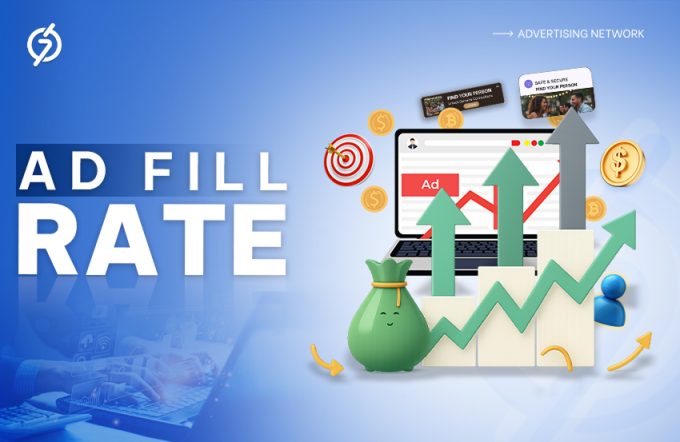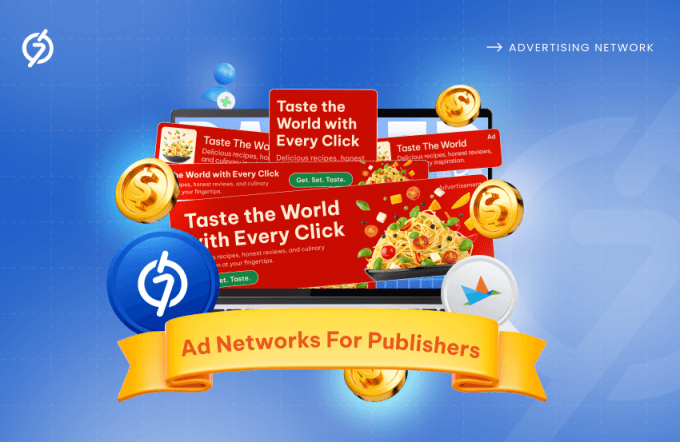If you are a publisher, you’ve probably noticed something: getting traffic doesn’t always mean making good money. Maybe you have tried different ad formats, but the earnings still aren’t where you want them to be. The fact is, it’s not just about choosing the right ad for monetization; it’s about where and how you place them.
In this blog, we will explore proven ad placement strategies for 2025 that many publishers like you are using to earn well.
Start Earning From Your Ad Placements Now!
Why Does the Right Ad Placement Matter?
As a publisher (website or blog owner), if you choose to monetize your content through online ads, it’s important to balance user experience with revenue generation. Effective ad placement strategies are key— when ads are positioned strategically, they catch the audience’s attention without disrupting their experience. A positive user experience (UX) can result in higher engagement in the form of clicks or impressions, ultimately helping you earn more from your ads.
Here are some benefits you can experience by using the right ad placement on your website or blog.
1) Improved Page Load Speed
When ad posting strategies are implemented smartly, your website loads faster. Bad ad placement, on the other hand, can slow things down, frustrate visitors, and cause them to leave before even seeing your content. A quick-loading site not only keeps people happy but is also prioritized by search engines like Google. So, the right ad placement means your audience gets a smoother browsing experience, and you don’t risk losing visitors just because your page takes a long time to open.
2) Lower Bounce Rates
Ad posting strategies have a direct impact on how long visitors stay on your website. When online ads are positioned naturally without interrupting the reading flow, users stay longer and explore more pages. This reduces bounce rates, meaning visitors don’t just come and leave instantly—they actually engage with your content. The right ad placement balances earning revenue without driving people away too soon.
3) Better CPC/CPM Rates
Advertisers pay more where their ads perform best. By using effective ad placement strategies, such as placing ads in-view where users naturally look, you’ll see better click-through rates. This directly helps you get better CPC and CPM rates. High-quality ad placement basically tells advertisers, “Your message will actually be seen here.” That trust earns you access to premium campaigns, which means more revenue from the same amount of traffic.
See the full story: CPC vs CPM: Choosing the Best Ad Model for Your Campaign
4) Reduced Ad Fatigue
If your users keep seeing the same types of ads in the same spots, they start to ignore them—it’s called ad fatigue. But with smart ad placement strategies, you can break that pattern. By regularly changing the position of your ads, your audience is more likely to notice and engage with them, especially when they appear in unexpected or new places on your website or blog.
Also read: Guide To Buying Ad Space And Successful Ad Placement
Best Ad Placement Strategies for Publishers
Advertisement placement should not be done blindly or randomly. It requires a strategic mindset to achieve better results. Below are proven ad positioning strategies that can guide you to success.
1) Understand Your Audience’s Behavior
Before placing ads, it’s important to know who your audience is and how they interact with your content. You must look at data like what pages they visit most, how long they stay, what devices they use, and where they come from. This information is important for developing effective ad placement strategies. It may take some time, but it will give you a better idea of the ad placement where you’ll get the best results.
2) Choose the Most Effective Ad Formats
Not all ad formats perform the same, and as a publisher, it’s important to understand this. Choosing the right ad placement starts with selecting the most suitable ad format. First, you should understand the nature of the ad format you’re considering. Don’t forget to check the ad dimensions to ensure it fits in the area where you plan to place the ad. Additionally, research other websites to see what ad formats they use, and check from a user’s perspective whether those formats disrupt the browsing experience.
Read more: Effective Ad Formats for Increasing Website Revenue
3) Select the Prime Spot for Ad Placement
When it comes to ad placement on websites or blogs, one size doesn’t fit all. Different areas on your website or blog can have drastically different performance, so it’s essential to choose the best locations to place your ads based on both user behavior and the type of ad format you’re using. There are various prime spots that publishers should consider, each with its own set of benefits depending on how users interact with content. Let’s explore the most common and effective advertisement placement options.
3.1) Above the Fold (Header / Top of Page)
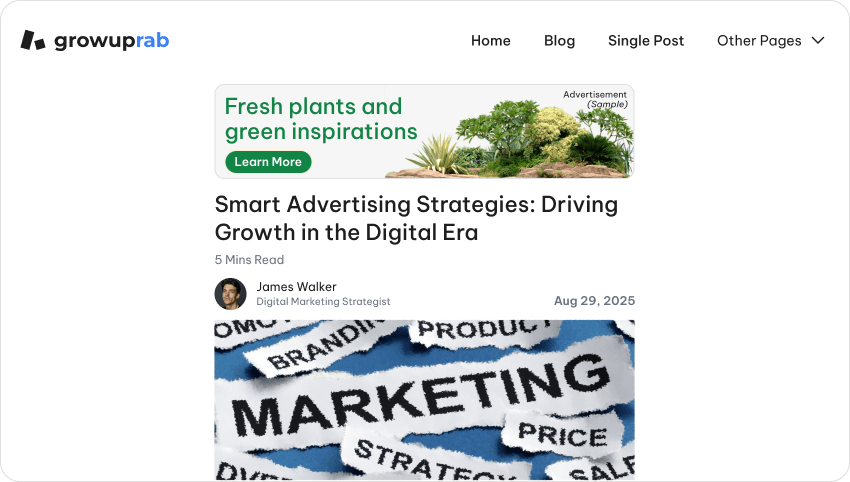
The “above the fold” area is the top part of a webpage that’s visible without scrolling. This space gets the highest visibility since it’s the first thing people see when they land on your site. It’s perfect for creating strong impressions and catching attention instantly. If you’ve selected the eCPM model, this space is perfect for maximizing earnings, since it generates the most impressions.
3.2) Sidebar (Left or Right Rail)
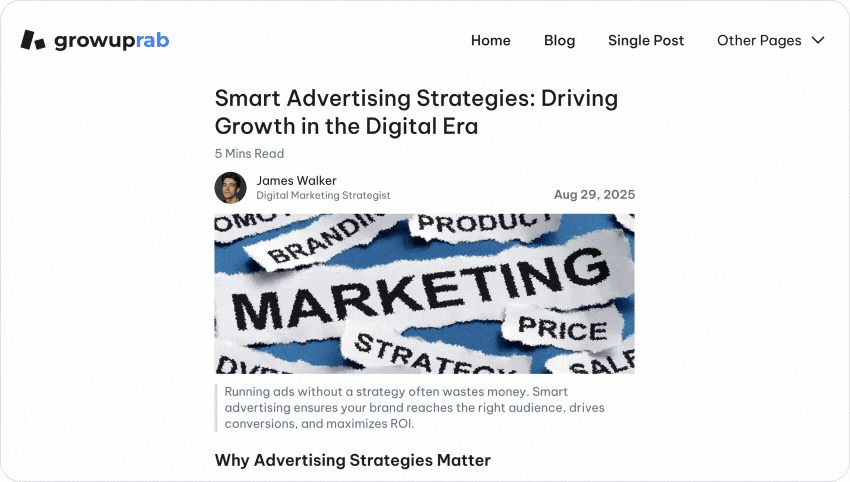
A sidebar refers to the sticky area where ads sit neatly along the left or right side of your webpage, staying visible as readers scroll through content. They work well because they don’t interrupt the main reading flow but still grab attention in a subtle way. Publishers favor sidebars for display ad placement, as it keeps the content experience smooth. They’re not as commanding as header placements, but they keep ads consistently present throughout the page.
3.3 In-Content
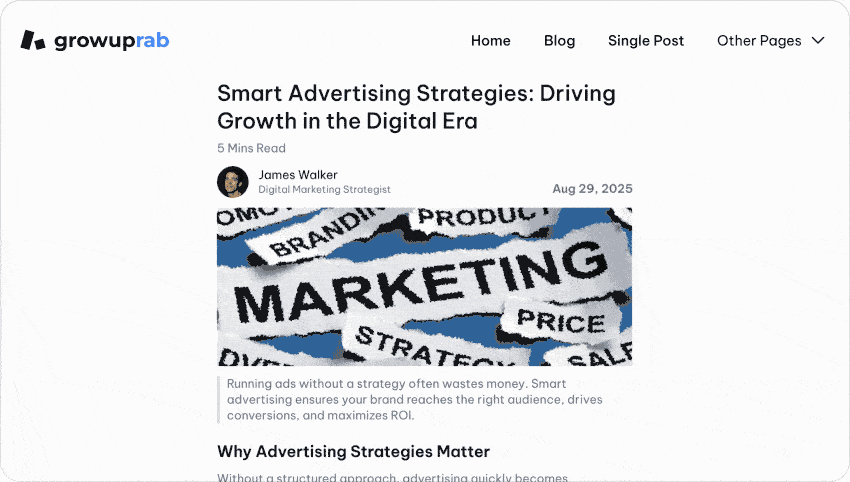
In-content refers to the placement of ads within the body of an article or blog post, a key element of effective ad placement strategies. Since they blend in with what the reader is already engaging with, they tend to draw more attention. These placements work especially well for native ads or contextually relevant offers, as they feel less intrusive and more like part of the experience. Done thoughtfully, in-content placements can drive higher engagement without disturbing the reader’s focus.
3.4 Below the Fold
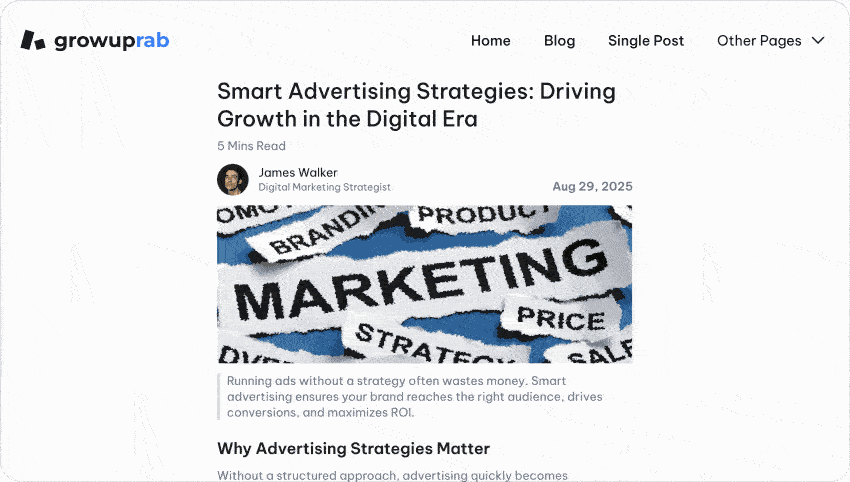
The “Below the Fold” area of a website refers to the part of a webpage that is not visible without scrolling. Ads placed below the fold only appear once a user scrolls down the page. While they don’t grab immediate attention, they do reach a more engaged audience—the ones genuinely interested in your content. This placement can be valuable for longer sessions, where readers are more likely to notice and interact with ads after settling into the content. Below-the-fold ads may not generate instant impressions, but they often bring quality engagement from a focused audience.
4) Set Frequency Capping
Frequency capping means limiting how often the same ad is shown to each visitor. If people see the same ad repeatedly, they may become annoyed or simply stop noticing it. Setting limits by using ad networks or platforms ensures that ads don’t overwhelm users, keeping their browsing experience positive. With caps, publishers can show ads just often enough to get clicks or impressions without causing ad fatigue. When combined with smart ad posting strategies, this approach keeps users engaged while maximizing the effectiveness of the best ad placements.
Explore more: Understanding Frequency Capping: Examples and Best Practices
5) Conduct A/B Testing
A/B testing is a smart strategy for running an experiment to see what works best. For ads, this means trying out different versions, like placing one banner (leaderboard) above the fold of the page versus in the middle of the content (sticky ads), and then comparing which placement brings in more clicks or engagement. You can also test ad sizes, formats, or even the number of ads shown. The beauty of A/B testing is that it’s based on real user responses instead of guesswork. Over time, this gives you clear data on which ad placement strategies bring better results while keeping your audience happy.
6) Monitor Performance Continuously
Posting ads isn’t a one-time job—it’s an ongoing process. User behavior and trends change, so something that worked well last month may not perform the same today. That’s why you need to keep tracking metrics like click-through rates, impressions, and revenue, along with considering effective ad placement strategies. Regular monitoring allows you to spot issues quickly and make adjustments as needed. When you keep an eye on ad performance, you can easily maximize ad revenue and improve user engagement consistently.
Learn more: How to Make Money by Posting Ads: A Comprehensive Guide
Common Ad Placement Mistakes to Avoid in 2025
In 2025, publishers need to be especially mindful of certain advertisement placement mistakes that can negatively impact both user experience and monetization. Here are some common mistakes to avoid:
1) Overloading Pages with Too Many Ads
One of the biggest mistakes publishers make is cramming too many ads on a single page. A 100% ad placement rate might seem like a way to increase earnings, but it often backfires. A cluttered page lowers the ad engagement rate because users feel overwhelmed and leave quickly. Instead of chasing numbers, focus on balance—use fewer and high-quality ads in the best spots. You can take inspiration from various ad placement examples that show how even a couple of well-positioned ads can earn more than a page overloaded with ads.
2) Failing to Focus on User Experience
User experience should always come first. If ads disrupt reading or make the page slow, visitors won’t return, which ultimately affects ad revenue. Bad ad placement—like covering content or autoplaying videos—drives people away. The best ad placement solutions prioritize seamless integration, where ads blend naturally with the content flow. When readers enjoy their visit, they’re more likely to engage with ads by clicking on them.
Discover more: Balance Ad Revenue and User Experience: A Guide For Publisher
3) Ignoring Mobile Optimization
There are approximately 5.28 billion smartphone users worldwide. This means that if you have a website, chances are most of your visitors are mobile users. However, many publishers make the mistake of not optimizing their ads for mobile devices. You should avoid this mistake by ensuring that your ads are placed where they will display properly across all device types, especially on mobile.
4) Poor Ad Placement
Placing ads without a strategy is like throwing darts in the dark. Poor ad placement means ads appear in spots that either distract, annoy, or get ignored. For instance, placing a large ad right in the middle of an article hurts the reading flow. You should avoid this mistake and balance visibility with user comfort, rather than chasing quantity or size.
Conclusion
The right ad placement in 2025 is all about smart strategy. By focusing on where and how you place your ads, you can improve both user experience and revenue. It’s not just about throwing ads everywhere; it’s about being smart with where you position them. Keep testing, track your results, and make adjustments as you go. When you get it right, you’ll see better engagement, lower bounce rates, and a lot more in your pocket!
Frequently Asked Questions (FAQs)
What is ad placement?
Ans. Advertisement placement refers to where and how ads are positioned on a website or blog to get the best visibility and engagement without disrupting the user experience.
What are ad positioning strategies?
Ans. Ad positioning strategies refer to the techniques and methods publishers use to position ads on their websites or blogs. These strategies aim to maximize user engagement and ad revenue while ensuring a positive user experience.
Why are ad placement tactics important for publishers?
Ans. Ad placement strategies are important because they help you balance making money from ads and providing a good experience for your visitors. A smart strategy increases ad visibility and click-through rates without irritating your audience.
What is the “above the fold” area?
Ans. “Above the fold” is the section of a webpage that is visible without scrolling. It’s a prime area for placing ads as it grabs immediate attention.
What is “in-content” ad placement?
Ans.“In-content” ad placement means placing ads within the body of your articles or blog posts. These ads feel more natural and blend with the content, leading to better engagement. It’s a smart choice for those looking to optimize their ad placement methods.
What does “below the fold” mean?
Ans.” Below the fold” refers to the part of a webpage that users only see after scrolling down. Ads placed here tend to reach a more engaged audience who’s already invested in your content.
How many ads should I place on a page?
Ans. It’s best not to overload your page with ads. A few well-placed, high-quality ads will perform better than cramming many ads into one page.
What are some common mistakes in ad placement?
Ans. Some common mistakes include placing too many ads on one page, disrupting the user experience, ignoring mobile optimization, and not testing ad placement strategies.














